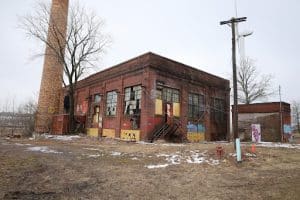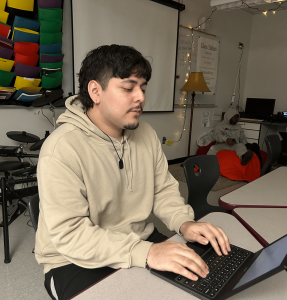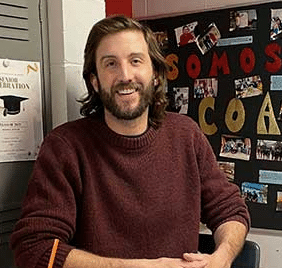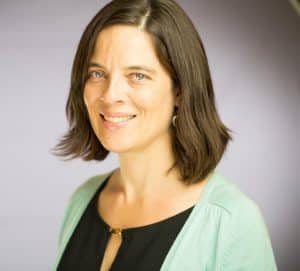Flexible, Competency-Based Learning in Action at COA
CompetencyWorks Blog
This week, we continue with our series on the Chelsea Opportunity Academy (COA). The COA is a small, alternative high school located in the city of Chelsea, Massachusetts founded in 2017 with generous support from the Barr Foundation’s Engage New England initiative. The school itself was built on the initiative’s mission to “do high school differently” and to rethink all aspects of the traditional high school to meet the needs of students off-track to graduate. Post one discussed the necessity of a key pillar of competency-based education and COA – building strong, affirming relationships. Post two traced the development, implementation, and revision of the core of the academic system, including its competencies and course structure.
In this post, we dive deeper into the flexible, competency-based curriculum at COA. Once deep relationships are formed between all school-community members, and a strong academic foundation and an understanding of this system is held by all, truly unique learning opportunities can happen. At COA, these opportunities take a variety of forms including a competency-based workplace program (Work2Credit); a strong dual enrollment portfolio; Transformative Learning Experience units (TLEs – model project-based learning units built by Springpoint and implemented by COA staff); and staff-created courses.

Relevant, Engaging Coursitos Within School
Within the COA curriculum, coursitos create a range of entry points into the competencies and meaningful content. The diversity of students also means a diversity of interests. Students can choose different coursitos or exercise choice within a coursito. Here we describe a sampling of the nearly 30 coursitos available to COA students. A few other courses include Americana: the History of MS-13; Stress Less; Hire Me: English for Employment; the History of Horror Cinema; and Gender and Society.
Gateway City: A History of Immigration to Chelsea
The Gateway City coursito examines immigration to Chelsea throughout the 20th century, which was mostly from Eastern Europe. Students then examine their own immigration experience. They trace how the increase in Chelsea’s Jewish population changed the entire character of the city and where those changes are reflected today. They talk to business owners of places – like the locally famous Katz’ Bagels – many of whom are descendants of people who immigrated. The assessments focus on the Communicate competency, and students apply the language of the rubric multiple times throughout the coursito. Teacher Christian Kelley describes how there are “four or five steps throughout the course where at first we’re going through the language of the competency and discussing how they are tying communication into their own life.”
As the culminating performance assessment, students record their own immigration story and compare their own experiences to earlier stories. Students listen to each others’ stories, and during a panel assessment, students give feedback to each other about how well they demonstrated the competency. Yeision, a student who is currently taking this coursito, stated, “I like the course. It is interesting. It makes me think more about the paths of other immigrants in this city.”
Chemistry – How Are They So Fast and So Furious?
A newly enrolled student walks into their classroom. They know that it is a chemistry course. The first thing they see in the room is…a car engine? In Chemistry – How are They So Fast and So Furious? – students learn the core concepts of chemistry while exploring the basic components of automobile engines. Over the duration of the coursito, students review the periodic table, learn to balance equations, and practice Lewis dot structures. They also measure CO2 output in a variety of actual car engines (including their assistant principal’s truck) through field research, explore an actual dissected car engine, and create models explaining the chemical reaction that causes nitrous oxide to make cars go faster. Building from the results of their scientific inquiry, in their final performance assessment, students make a case at the molecular level for why sheet metal rusts in some environments and not others.
Being True to Myself
The Being True to Myself coursito is a student-centered learning experience designed for newly enrolled, English Language Learner students. As the first of a series of ELL courses on English language arts, its focus is not only on the foundational skills of reading, listening, speaking, and writing the English language; it’s also a holistic opportunity for students to get to know each other, and themselves, a little more. Throughout the coursito, students practice each foundational skill in cyclical mini-units. These mini-units allow students multiple opportunities to learn, review, refine, and hone their skills through guided practice and revision.
During the course, students read three different books that include characters who have moral conflicts. The final performance assessment for the course is a verbal presentation with an accompanying PowerPoint, in English. It is assessed via the school’s Argue competency, as students create claims as to how their own set of values have shaped their past decisions.
Gentrification in Chelsea
In addition to the teacher-designed coursitos, COA has created coursitos based on the model TLEs designed by Springpoint as part of their Making High School Meaningful framework, which incorporates best practices in rigorous and engaging pedagogy and project-based learning. As part of one TLE on gentrification, the culminating performance assessment invites students to create a photo essay that uses photographic evidence to build an argument on the effects of gentrification on the city of Chelsea.
One afternoon, while Laurie was visiting, there were two students ready to present their photo essay to a panel of teachers and students. For one student who was new to COA, it was his first coursito presentation. In this case, both students had impressive photos and analysis but struggled to fully articulate the ideas behind their message. Based on feedback from the panel, each student would practice more and re-present the following week. Former student Isaac Middleton reflected that the course “allowed for [me] to be creative and express how I saw gentrification affecting my city. It was an outlet for me.”

Valuing Learning Beyond the School Walls
Work-To-Credit
COA recognizes that learning occurs inside and outside the classroom. To value and capture this learning, COA built a Work-to-Credit system that allows students who work outside of school in a variety of roles such as construction workers, factory supervisors, and early childhood teachers to earn credit by documenting their skills and knowledge from work in relation to the COA competency system. The program started as a response to the pandemic spike in employment and illustrates how COA exercises its flexibility to pivot and adapt based on its students’ needs.

The program entails students earning credit based on how well they demonstrate the skills they develop at work. The Work-to-Credit program operates from what the student knows, their development of new skills, and future planning. First, the teacher will work with students to identify skills they still need to develop or demonstrate. Then the teacher and student will build a plan based on the student’s interests. Students are given the opportunity to demonstrate their skills and are evaluated based on the COA competencies. For example, COA offers a course where students are assigned to teach their classmates a skill. One student who works as a sous-chef taught the class how to cut an onion and used competencies to evaluate the efficacy of his lesson. From this experience, the student was able to identify qualities that make a good trainer and how he demonstrated those qualities. Additionally, the process directly connects with supporting English Language Learner students, especially those with interrupted formal schooling, by building their English and professional literacy skills.
Dual Enrollment
Earning high school and college credit is another way that COA offers multiple ways to learn. Currently, COA has four partners offering dual enrollment courses, and approximately 10% of COA students enrolled and successfully completed a college-level course last year. Currently, the dual enrollment credit is treated similarly to credits that students earned from prior enrollment in other schools, though COA is considering developing a way to articulate the alignment of dual enrollment credits with the COA competency framework. In addition to being another avenue for learning, dual enrollment allows students to experience post-secondary education and see themselves as college students.
The Road Ahead: Building Authentic Student Collaboration in an Asynchronous Environment
In its sixth year as a school, COA has many curriculum components and supporting academic structures that allow students to thrive. Their blended, asynchronous learning environment meets student needs, while their competency-based, rigorous curriculum provides students with the skills they need to thrive in the post-secondary world. But the system is not without challenges. As COA looks into the coming years, staff and students are eager to find more ways for students to collaborate authentically in this highly asynchronous environment. Continuing with support from the Barr Foundation, COA is poised to dig in deeper into transformative learning experiences for students, post-secondary planning, 1:1 student mentorship, and further enhancing competency-system development.
COA staff are building a bank of curriculum queues and instructional moves to get students talking and working together to build community and teamwork skills. The key practice of involving students as panelists during the panel assessment portion is incorporated into many coursitos. By seeing other students share their work and participating in discussions of the ways that students demonstrate the competency indicators, students support each other and have an opportunity to internalize the standard of excellence. Additionally, staff members have started the practice of opening class with 10-20-minute skill-building games that focus on explicit instruction of the competency rubric as well as core academic skills, prior to students beginning their individual coursework.
As of right now, staff agree that these activities to create a more synchronous, collaborative environment are helpful, but they are planning a more comprehensive long-term solution. Over the next several years, the school will use the essential design process that it has used since its inception, which flows from understanding to designing to building. The “Understand, Design, Build” process, created by Springpoint, mirrors the very process of learning highlighted in COA coursitos. In the coming year, COA staff will look at internal best practices in collaboration, work with other schools who are also asynchronous in nature to see their best practices in student collaboration and dig into as much research as possible related to effective collaboration amongst students. They will formulate a plan, implement it, and iterate. Flexible, competency-based learning works not only for COA students but also for the COA team.
Read the Series
- Chelsea Opportunity Academy: Relationships, Flexibility, and Competency-Based from the Start
- The Evolution of a Competency-Based Academic Model at Chelsea Opportunity Academy
 Adam Aronson is a founding administrator and current assistant principal for the Chelsea Opportunity Academy. He is COA’s primary director for teaching and learning as well as school operations. He is a proud educator in the city of Chelsea for the past 11 years and is enamored with all things CBE.
Adam Aronson is a founding administrator and current assistant principal for the Chelsea Opportunity Academy. He is COA’s primary director for teaching and learning as well as school operations. He is a proud educator in the city of Chelsea for the past 11 years and is enamored with all things CBE.
 Laurie Gagnon is the CompetencyWorks Program Director at the Aurora Institute. She leads the work of sharing promising practices shaping the future of K-12 personalized, competency-based education (CBE). She lives a couple towns over from Chelsea in Somerville, MA and hopes to be a semi-regular visitor at COA.
Laurie Gagnon is the CompetencyWorks Program Director at the Aurora Institute. She leads the work of sharing promising practices shaping the future of K-12 personalized, competency-based education (CBE). She lives a couple towns over from Chelsea in Somerville, MA and hopes to be a semi-regular visitor at COA.